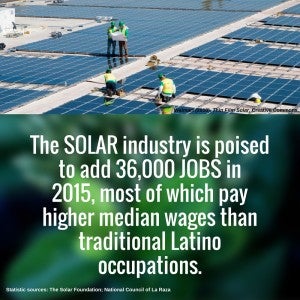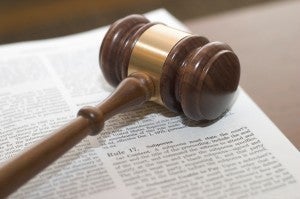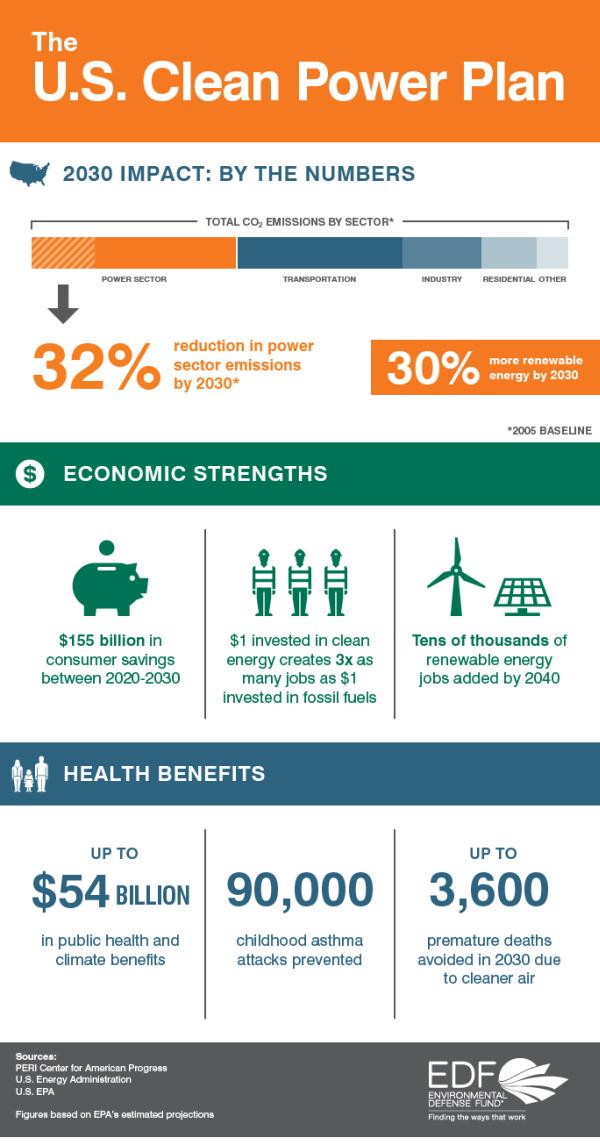We are on the verge of seeing the final Clean Power Plan, after years of stakeholder engagement and input. So this is a good time to acknowledge what many state leaders themselves recognize – that EPA’s Clean Power Plan reflects the extensive input of states on its core, most fundamental framework, including the establishment of carbon intensity standards that reflect the different energy mixes in each state, and extensive state flexibility to achieve the standards in a manner that enables state-based compliance plans that minimize costs and maximize benefits.
States Leading the Way
Not surprisingly, states from Michigan to California recognize the benefits of submitting state-forged compliance plans under this flexible framework. Despite misguided efforts to pressure them to “just say no”, state officials are digging in deep and constructively engaging — an in the process, demonstrating what actual leadership looks like.
Let’s take a closer look at what state leaders themselves are saying about this.
Bob Martineau, president of the Environmental Council of the States and a commissioner of the Tennessee Department of Environment and Conservation, praised EPA for its extensive outreach to states prior to issuing the proposed Clean Power Plan.
Martineau stated:
…as you’ve seen, the Clean Power Plan set a state-by-state proposed guideline, now you could agree or disagree with it, but that was a clear voice the states said to EPA prior to the proposal is we’re not all starting in the same place, so one uniform number of a reduction target won’t work, given the different states’ unique characteristics … [The early outreach] was effective in some of those things like to recognize the difference in where the states were starting with their energy portfolio and what their realistic targets would be. (Tenn. environment Commissioner Martineau talks power plan’s jurisdictional challenges, E&E News, March 23, 2015)
Many other state leaders have commented publicly on the benefits of proactive state planning in this flexible framework and the urgent need to take action.
In a recent interview on Meet the Press, Governor Jerry Brown of California stated:
Here’s the point, that the buildup of carbon coming from coal and petroleum and other sources, that this is going to create these droughts and much, much worse. And that’s why to have the leader of the Senate, Mr. McConnell representing his coal constituents, are putting it at risk, the health and well being of America, is a disgrace.
The Republican Governor of Michigan, Rick Snyder, told the Battle Creek Enquirer that change is coming:
[S]o let’s be proactive and design a policy to accommodate that.
Paul Thomsen, head of Nevada Governor Brian Sandoval’s energy office, told the Elko Daily Free Press:
My position is there’s no state better positioned to be able to comply with those standards. We’ve been ahead of the federal government for some time.
Lawmakers in the Republican-controlled Arizona legislature recently passed a bill expressly providing for the development of a state-compliance strategy to meet EPA requirements under the Clean Power Plan.
Governor Hickenlooper of Colorado directly responded to Senator McConnell’s request that states not submit plans by saying:
Colorado is already a leader in reducing carbon emissions from power plants, on track to hit an estimated 20% reduction over 2012 emissions – and we have done all this while keeping energy rates affordable. We will continue to engage with our industry to develop a compliant Clean Power Plan, as required by federal law.
John Quigley, Secretary of the Pennsylvania Department of Environmental Protection recently said:
[W]e can meet this mandate, this clean-power mandate, in a way that benefits Pennsylvania’s economy and environment. (Pa. DEP Secretary Quigley discusses state’s shift on power plan. E&E News PM, July 20, 2015)
Additionally, red and blue states including Utah, Michigan, Missouri, and Pennsylvania are working with the National Governors’ Association (NGA) to identify cost-effective strategies for reducing carbon emissions to comply with the Clean Power Plan.
As Utah officials said:
Knowing that we will likely find ourselves having to comply with some form of carbon regulation in the near term, we are determined not to be caught flat-footed. (Coal-heavy states explore carbon-cutting options with support from National Governors Association, ClimateWire, March 24, 2015)
In their application to NGA, they stressed that:
[B]eing proactive and strategically positioned to comply with impending federal regulations is preferred to being reactive. (Coal-heavy states explore carbon-cutting options with support from National Governors Association, ClimateWire, March 24, 2015)
Power Companies Working With States to Craft Compliance Plans
Major power companies also recognize the benefits of homemade compliance plans that fully harvest state flexibility.
A recent, salient example comes from the coal-intensive state of Wyoming where Berkshire Hathaway Energy’s Chief Environmental Counsel, Cathy Woolums, recently provided comments at the Wyoming Infrastructure Authority winter meeting that indicated the importance of action by the state to submit a compliance plan for the Clean Power Plan.
Woolums stated:
[I]f the state wants to push back against the plan, that’s okay, but we really do have to have a backup plan because if not, we will be caught in a situation where we don’t have any options…And that’s the worst of all positions to be in.
An additional critical point she made is that the 2030 targets of the CPP are achievable, she and showed important leadership when she urged state officials to work with other states to meet the targets.
Leveraging Opportunities for State Policy Priorities through the Clean Power Plan
As observed by Richard Revesz, legal scholar and Director of the Institute for Policy Integrity, the extraordinary state flexibility under the Clean Power Plan provides a tremendous opportunity for state policy priorities to be thoroughly integrated into state planning – and it is worth fighting for.
Revesz told the Wall Street Journal that the Clean Power Plan sets:
…statewide carbon reduction targets that states can meet through any means they choose: improvements in the efficiency of energy production, increased use of natural gas and renewable energy, programs that help consumers save energy, or any other strategy the states prefer … This flexible approach is one of the rule’s greatest strengths—it will allow states and energy companies to reduce their emissions through the cheapest and most effective means available. (The Legal and Economic Case for Obama’s Clean Power Plan, Wall Street Journal, March 31, 2015)
EPA conducted unprecedented outreach around the Clean Power Plan, and state and power company officials across the country were highly engaged in the process.
States underscored the importance of ensuring that the plan EPA proposed include substantial flexibility for states that allowed them to craft a plan tailored to their own states’ unique energy profile. The Clean Power Plan delivers on this promise of flexibility for state compliance, and gives states the opportunity to be in the driver’s seat to secure cost-effective emissions reductions to protect the health of their families and our climate in the best way possible.
Judging from the way states across the country are engaging constructively with EPA and their stakeholders in the lead-up to a final rule, it is clear that state officials are recognizing the importance of stepping up to the plate and thoughtfully shaping the path to their own clean energy future. That’s real leadership.
 Earlier this month, the United States announced a major step forward in addressing air quality concerns and climate change threats to Latinos. I’m talking about the Clean Power Plan, which establishes the first-ever national limits on carbon pollution from powerplants and places us on a path to heed Pope Francis’s call to protect our planet.
Earlier this month, the United States announced a major step forward in addressing air quality concerns and climate change threats to Latinos. I’m talking about the Clean Power Plan, which establishes the first-ever national limits on carbon pollution from powerplants and places us on a path to heed Pope Francis’s call to protect our planet.















